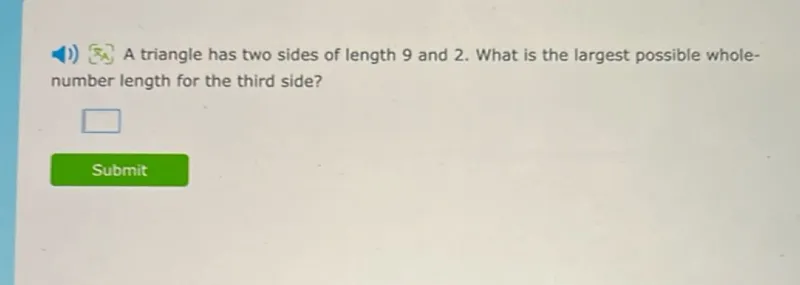Questions: A triangle has two sides of length 9 and 2. What is the largest possible whole number length for the third side?

Transcript text: A triangle has two sides of length 9 and 2. What is the largest possible whole number length for the third side?





